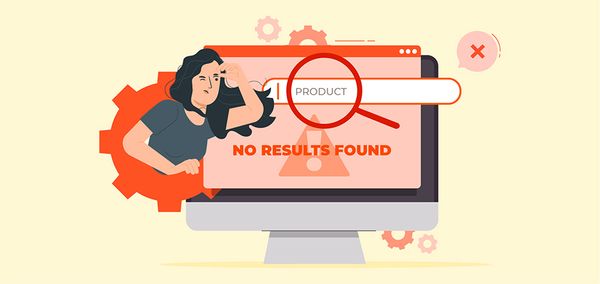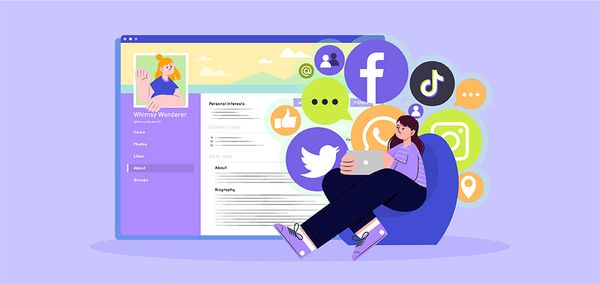What Is Corporate Identity? All You Need to Know Is Here

It isn't easy to imagine someone without a name, personality, or distinguishing behaviour. It is human nature to ascribe specific identification characteristics to a person or object and refer to them as its Identity. As a result, every human creation, whether unique or not, has its own Identity.
Corporations are in a similar situation. Corporations are given identities, personalities, and even humanization in order to assist the target audience in recognizing, relating to, and differentiating them in the market. The corporate identity is a corporation's distinct Identity. But what exactly is corporate Identity, what are its components, and why is it vital for a business?
Let us investigate further.
What Exactly Corporate Identity Term Defines
Corporate Identity is the path any company chooses to present itself to its consumers, including internal and external audiences, and to the entire world. This way, the company behaves, looks, and communicates depending on its Identity.
Through this unique Identity, businesses become capable of showing themselves in unique ways and let people recognize them easily. Also, corporate identity helps a business stand out from its rivals and better be able to identify itself from them. The idea of a company identity needs to be carefully thought out and strategically applied.
Elements Included in Corporate Identity
There are primarily three elements that a corporate identity contains. Here, we will take a closer look at each of them, which will help us to understand the concept more clearly.
- Corporate communication,
- Corporate design, and
- Corporate behaviour
Corporate Communications
Corporate communications refer to how a corporation communicates with and distributes information to internal and external audiences in order to build a favorable point of view and a consistent picture of the organisation across all channels.
Simply put, it is what the corporation conveys.
It includes the following:
- Internal communication: It includes rules and procedures, team communications, internal newsletters, and anything else that pertains to communicating with the internal audience.
- Paid Communication: It includes communication messages sent through paid media such as commercials, sponsorships, events, and so on.
- Media Relations: It includes all earned-media communication, such as public relations, news, and so on.
- Investor relations: Here, in investor relations, you can expect all signals to be delivered to the company's investors.
Corporate Design
The corporate design shows the company's visual Identity. It encompasses all of the firm's visual assets, such as the name, logo, brand colours, brand graphics, slogan, and so on, that help define the organisation visually.
The following are significant elements of corporate design:
- Logos: The unique marks representing a corporation or its products. It serves as immediate recognition for a corporation.
- Colours: A palette of official colours that symbolise the company is included in the brand colours. In most cases, only these colours are employed in brand assets.
- Fonts: A corporation often maintains a list of authorised typography that is utilised in its communication messaging.
- Website: A website is how a company advertises itself in the digital world. It's similar to a brand outlet but in the internet realm.
- Internal Design: Corporate Identity extends to the office's interior design. It exposes a lot about the firm, such as how the organisation functions, the work culture, and so on.
Corporate Behaviour
Corporate behaviour is, in the most literal sense, the firm's behaviour. It contains the ethical code of conduct and corporate social responsibility, highlighting the company's underlying principles and philosophy.
| Get Started Now to Grow Your Online Business with the Best AliExpress Dropshipping Tool - DSers! |
Technically, corporate behaviour refers to how a firm operates as a single entity in various conditions caused by political, economic, social, technical, legal, and environmental issues.
Corporate behaviour is frequently motivated by social media responsibility. Starbucks, for example, planned to recruit 10,000 refugees internationally by the end of 2022 in order to fulfil its social obligation.
Corporate Identity vs Brand Identity
The primary distinction between brand identification and corporate Identity is that brand identity is used to create the difference between a product or service from the competition. In contrast, corporate Identity is concerned with the whole perception of the organisation, not simply the product.
Contrary to common assumption, Corporate Identity and brand identity are not synonymous. Here is how:
- Brand identity communicates the quality, ethics, and emphasis of a given product. It creates a brand image based on a specific offering.
- Corporate Identity expresses the principles, values, and emphasis of the firm that generated the product. It creates a corporate image for the parent firm.
Unilever, for example, owns a number of brands, including Dove. The Identity of Dove is the brand identity, whereas the Identity of Unilever is the corporate Identity.
- A brand identity offers a product personality and face value, allowing it to leave a long-lasting imprint on clients' thoughts, allowing them to purchase that specific product.
- The fundamental reason that brand identity is crucial to a firm is that it gains customer recognition. The logo is extremely important in establishing the company's Identity.
- Corporate Identity engages in corporate identity exercises such as emphasising logos, collaterals, and outlet design in order to improve consumers' impressions of the quality and services.
In Short: Brand identity is the perception of a certain product that a company offers in order to engage the most significant number of consumers. The primary goal of developing a brand identity is to identify one product from other comparable items in a consumerist culture. At the same time, your company's corporate Identity is how it portrays itself to the outside world.
The Necessity of Corporate Identity
A strong identity is essential for shaping people's favourable perceptions and views about the firm.
Here are some examples of why corporate Identity is essential:
- Aids in Differentiation: A well-planned corporate strategy assists a company in differentiating itself in its market
- Create Awareness: A corporate identity raises awareness by communicating the company's commitment to both internal and external audiences.
- Increases Market Presence: A robust corporate brand portrays the organisation as more trustworthy, which increases its market presence.
- Build Reputation: A consistent corporate identity, along with exceptional service, builds consumer trust in the organisation, therefore growing its reputation over time.
- Built Consistent to Customer: Maintaining a consistent corporate identity based on the company's beliefs, principles, and objectives helps consumers connect with and create loyalty to the organisation.
Best Examples of Corporate Identity
Corporate Identity is more than simply a logo, tagline, corporate colours, and typefaces. Its primary purpose is to establish a recognizable picture of the organisation in customers' minds. Every point of interaction with the brand becomes critical during this process, from branded packaging to consumer communication. For a deeper understanding of the concept, let's explore the top examples of corporate Identity below:
Apple
The exclusivity formula is crucial to Apple's business brand. This formula is emphasised by Apple's motto, "Think Different." It ensures that all of its offerings convey the same corporate message. This distinguishes it from other market participants.
Aside from that, Apple has given back to society by providing educational programs to over 3.6 million suppliers … since 2008. In addition, making effective use of corporate identity characteristics helps Apple's strong corporate brand.
Starbucks
Starbucks' high-quality, expensive, and delicious coffee is well-known across the world. However, it is not the only thing that makes the brand well-known. Its more trustworthy and respected reputation stems from the consistent atmosphere it generates within its stores, the consistent corporate promise, and the consistent brand design.
Starbucks is also concerned about social responsibility. It has assisted farmers and provided jobs to refugees, among other things. As a result, Starbucks has become one of the world's most influential coffeehouse businesses.
Winter Milk
The Mexican café chain with artisan ice cream's fundamental concept is the use of natural ingredients. The Identity is designed in the manner of the 1960s. Nostalgic sentiments are associated with family outings to the ice cream shop, high-quality products, and a light and carefree attitude.
The interior of the café reflects this atmosphere. Contrasting orange (typical for the Netherlands, which is known for the quality of its dairy products) and blue are used as corporate colours (associated with coolness). Rounded lines and clean laconic typeface go back to the 1960s. The logo is likewise designed in the same manner, with the brand name in the shape of a rhombus with rounded edges.
Bottom-Line
A clear and robust business brand has become critical in today's ever-changing industry. It helps to differentiate and leaves a lasting effect on people. It is apparent that, ahead of venturing into the market, you should consider creating your business identity.
If you are still unsure about the process and want experts' help and suggestions, visit DSers now. The blogs available there are updated by people with expertise on the topic. The professionals’ guidance you will explore contains a deep understanding of how the online business process should proceed to earn more revenue from your online business.













 Company
Company
 Why Choose DSers
Why Choose DSers
 Blog
Blog
 Help Center
Help Center




 Live Chat
Live Chat